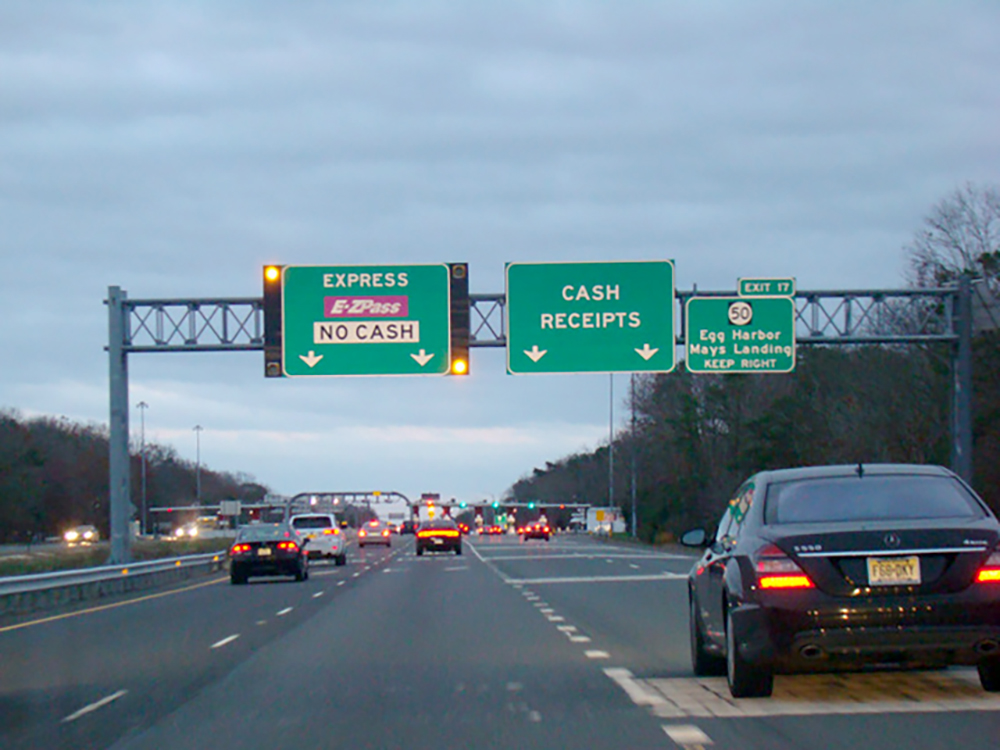When getting there was half the fun
By Bruce Klauber
Prior to 1964, if someone from Philadelphia and surrounding regions wanted to visit Atlantic City by car or bus, there were only two routes to follow: the White Horse Pike and the Black Horse Pike.
While those roads were picturesque and filled with fruit stands, farms, mom-and-pop restaurants and shops, and other roadside oddities, the journey to the shore was slow. If your car didn’t have air conditioning, the trip could be uncomfortably hot.
Around 1963, I decided to take a bus from Philadelphia to Atlantic City. It was sweltering, and the Greyhound bus must have made more than a dozen stops. I never thought we’d get out of Camden.
Taking the train was another option. Philadelphia-to-Atlantic-City train service was at its height in the 1920s, as three lines – the Atlantic City Railroad, the Camden and Atlantic, and the West Jersey and Seashore Railroad – were providing service. It’s been said that for their time, those trains were actually pretty fast.

Train service from Philadelphia to Atlantic City circa 1964 was spotty. The three lines, which had been competing against one another for so many years, combined to form one line called the Pennsylvania-Reading Seashore Line.
With the rise of travel by car, not a lot of folks even thought about taking the train to the shore. Records show that by the latter 1960s, the whole line had become nothing more than a commuter service that originated from a tiny terminal in Lindenwold.
Conrail took over what was left of the service in 1976, and by 1981, there was no train service to Atlantic City until the line was restored in 1989.
If a potential Atlantic City visitor had the time, the funds, and the desire, there was, for some years, commercial air service between Philadelphia and Atlantic City. All American Airlines, operating out of Bader Field, offered commercial air service as early as 1949. Four years later, All American changed its name to Allegheny Airlines, and in 1959, the commuter air operation was moved to Atlantic City International Airport. By 1990, the whole operation was discontinued.
Atlantic City, at the time, needed all the help it could get. Tourism was down and word was getting around that the city was in decline. It didn’t help that the 1964 Democratic Convention, held Aug. 24-27 that year, put the aging resort, and all its shortcomings, in the national spotlight.
The city fathers believed that a faster car route between Philadelphia and Atlantic City could show the city in a positive light, demonstrate its commitment to improving tourism, and go a long way toward reversing Atlantic City’s decline.
The Atlantic City Expressway, a 44-mile stretch of highway which runs from Route 42 in Turnersville to the one and only Queen of Resorts, opened on July 31, 1964, just in time for the beginning of the Democratic Convention. The link between Atlantic City and the Garden State Parkway was opened a year later. Total cost for the roadway was a bit over $42 million, and it took less than two years to complete.
The concept of a modern highway linking Philadelphia to Atlantic City was floated long before 1964. It came up as early as 1932, calling for a road that would originate from the foot of the New Jersey side of the Ben Franklin Bridge, and go straight to Atlantic City. It never happened, and the idea didn’t come up again for more than 20 years.
If any one person can be deemed responsible for the building of the Atlantic City Expressway, it would be state Sen. Frank “Hap” Farley, who started pushing the idea of building an express route in the mid-1950s. Farley was a forward-thinking politician who was also an early supporter of legalized gaming in Atlantic City.
Around 1959, what was then called the New Jersey State Highway Department started taking baby steps toward a new roadway by conducting a Turnersville-to-Atlantic-City traffic survey. Three years later, something called the New Jersey Expressway Authority Act was passed authorizing the issuance of bonds to raise the money for construction.
Unfortunately, the creation of the Atlantic City Expressway did not increase tourism as expected. It turns out that the tourism issue had little to do with how to get to Atlantic City. The issue was with the city itself.
The records show that it was not until gambling was legalized in 1978, that traffic on the Expressway and the numbers of tourists visiting Atlantic City increased.
Whatever the numbers are in Atlantic City, the South Jersey Transportation Authority continues to update, expand and modernize the Atlantic City Expressway. One of the Authority’s biggest projects was detailed in last year’s annual report.
“One of the more active projects for the South Jersey Transportation Authority is the third lane widening project that will add a third lane in each direction from interchange 31 to interchange 44 at route 42,” the report states. “The need for the project is to alleviate recurring congestion, particularly during the peak summer periods, which has resulted in a high number of rear-end and side swipe crashes. The project will improve safety, mitigate existing geometric deficiencies, and maintain a state of good repair for this essential transportation connection. Upon completion of this project, the entire corridor will be a continuous, third-lane section.”
This is very good news. Visitors have been coming to Atlantic City from Philadelphia by car, bus, plane and train since the 19th century. Tourists wanted to visit the Queen of Resorts then, and if the Atlantic City Expressway developments are any indication, plenty of visitors want to visit Atlantic City now. And they want to get here in record time.










